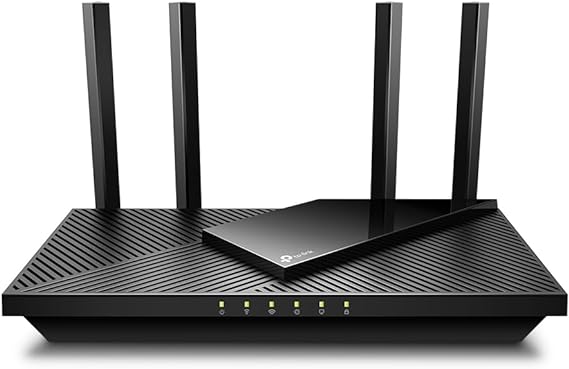📋 Table of Contents:
Cloud GPU: A Revolution in Cloud Computing
In the modern era of technology, cloud computing has become one of the most essential tools for businesses and individuals to efficiently and quickly execute various tasks. One of the most significant advancements in this field is Cloud GPU, which has fundamentally transformed the way we handle computationally intensive tasks such as artificial intelligence, big data processing, 3D design, and cloud gaming.
What is Cloud GPU?
The term Cloud GPU refers to Graphics Processing Units (GPUs) hosted in the cloud, which can be rented on-demand via the internet. Instead of relying on expensive local graphics cards, users can access high-performance GPU processing power through the cloud, providing greater flexibility and scalability.
Advantages of Using Cloud GPU
-
High Performance and Cost Savings
Cloud GPU delivers superior performance compared to traditional Central Processing Units (CPUs), particularly for tasks requiring extensive graphical computations. It also reduces the need for investing in costly hardware that can quickly become outdated. -
Scalability and Flexibility
Users can scale resources up or down based on their needs, allowing them to control costs and optimize performance without purchasing additional hardware. -
Remote Access
Cloud GPU enables users to work from anywhere without requiring powerful local machines, making collaboration easier for global teams. -
Efficiency in AI and Deep Learning
AI applications and deep learning models heavily rely on GPU processing power, and Cloud GPU significantly accelerates training processes and data analysis.
Key Use Cases
- Training AI and machine learning models
- Big data analysis, image processing, and video rendering
- Cloud gaming and high-quality content streaming
- Engineering and 3D design
Challenges and Future Outlook
Despite its numerous benefits, Cloud GPU faces challenges such as ongoing subscription costs, internet connectivity requirements, and the need for enhanced security and privacy. However, as technology continues to evolve, it is expected to become more efficient and cost-effective over time.
Conclusion
Cloud GPU is a game-changer in the world of computing, allowing users to leverage advanced graphical processing capabilities without the need for expensive hardware. With continuous innovations in this field, this technology will have a profound impact on various industries, enhancing productivity and efficiency across multiple domains.
Cloud GPU: The Future of Cloud Computing and Its Impact on Modern Industries
Cloud GPU is one of the most significant innovations in cloud computing, providing users with access to high-performance graphical processing capabilities without the need for expensive hardware investments. With the rapid expansion of artificial intelligence applications, cloud gaming, and big data analytics, this technology has become a cornerstone for many industries that rely on high-performance processing.
What Sets Cloud GPU Apart from Traditional Computing?
Traditional computing relies on local devices equipped with either integrated or dedicated GPUs, making them subject to performance limitations and high costs when scaling computational power. In contrast, Cloud GPU allows users to access high-performance GPUs online, offering advantages such as:
- Advanced Parallel Processing: Cloud GPUs can handle multiple tasks simultaneously, making them ideal for training AI models and processing big data.
- Dynamic Scalability: Resources can be increased or decreased as needed, enabling cost control and performance optimization without being limited by local hardware.
- Seamless Integration with Cloud Platforms: Cloud GPU works effortlessly with platforms like AWS, Google Cloud, and Microsoft Azure, providing an integrated environment for developers and enterprises.
Practical Applications of Cloud GPU Across Industries
1. Artificial Intelligence and Deep Learning
Cloud GPU plays a crucial role in the development and training of AI models, which require vast amounts of data and parallel processing. It is used for:
- Training deep neural networks at high speeds.
- Analyzing big data to identify patterns and predictions.
- AI applications in image processing and facial recognition.
2. Cloud Gaming
Cloud GPU has transformed the gaming industry by allowing players to enjoy high-quality games without powerful hardware. Platforms like NVIDIA GeForce Now, Google Stadia, and Xbox Cloud Gaming rely on Cloud GPU to deliver smooth gaming experiences over the internet without local game installations.
3. Engineering Design and Simulation
Software applications such as Autodesk, SolidWorks, and Blender require high-performance graphical processing for 3D modeling and industrial simulations. Cloud GPU enables engineers and designers to work remotely without needing high-end local devices.
4. Medical Imaging and Analysis
In healthcare, Cloud GPU is used for processing and analyzing CT scans and MRI images, assisting doctors in diagnosing diseases more accurately and quickly. AI-powered models also utilize Cloud GPU to detect medical conditions from medical images.
5. Blockchain and Cryptocurrency Mining
Mining cryptocurrencies like Bitcoin and Ethereum requires immense computational power to process and verify transactions. Cloud GPU offers a cost-effective alternative to purchasing mining equipment, allowing users to participate in mining without significant hardware investments.
Challenges Facing Cloud GPU
Despite its numerous advantages, Cloud GPU presents some challenges that require sustainable solutions:
- Operational Costs: While more affordable than purchasing hardware, long-term use can be costly, particularly for enterprises needing extensive data processing.
- Security and Privacy Concerns: Since data is processed on cloud servers, ensuring data protection and preventing breaches remains a challenge.
- Dependence on Internet Connectivity: Performance relies heavily on stable and high-speed internet connections, which may impact users in areas with weak infrastructure.
The Future of Cloud GPU: What Lies Ahead?
Cloud GPU is expected to continue evolving with new technologies enhancing its efficiency. Some anticipated developments include:
- AI-Driven Cloud Optimization: AI could be integrated to manage cloud resources more intelligently, improving performance and reducing costs.
- Edge Computing Integration: This will allow data processing closer to its source, reducing latency in applications such as autonomous vehicles and IoT devices.
- Energy Efficiency Improvements: Future GPUs will be designed to consume less energy, reducing the environmental impact of cloud computing.
Conclusion
Cloud GPU represents a significant leap forward in cloud computing, providing a flexible and efficient solution for industries requiring high-performance graphical processing. As technological advancements continue, this technology will become even more efficient and cost-effective, strengthening its role in fields such as AI, cloud gaming, and big data analytics.









.jpg)